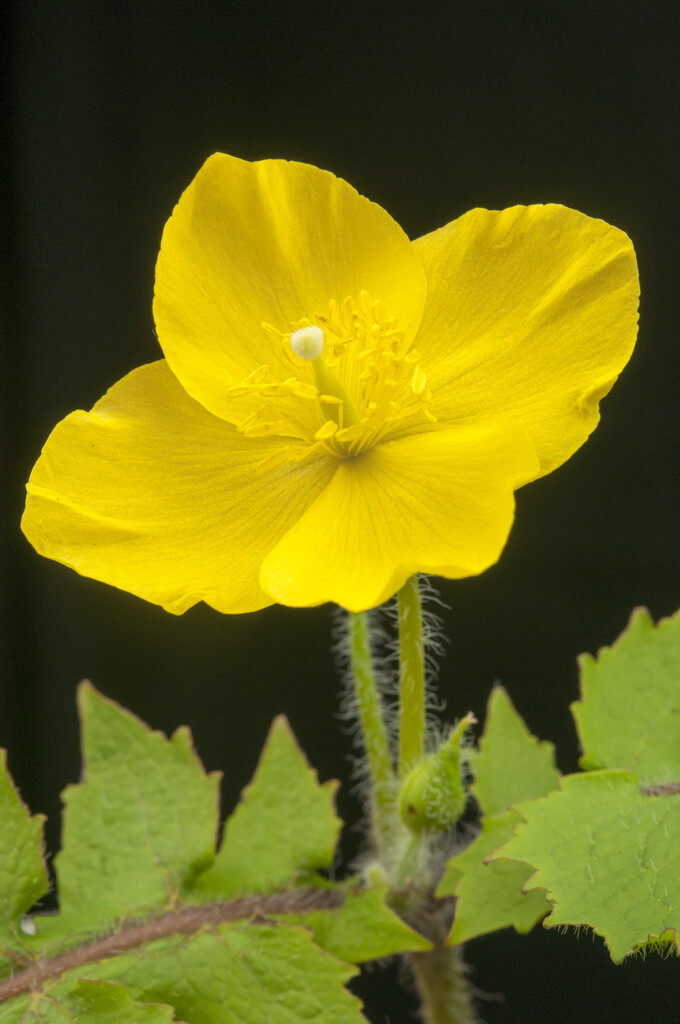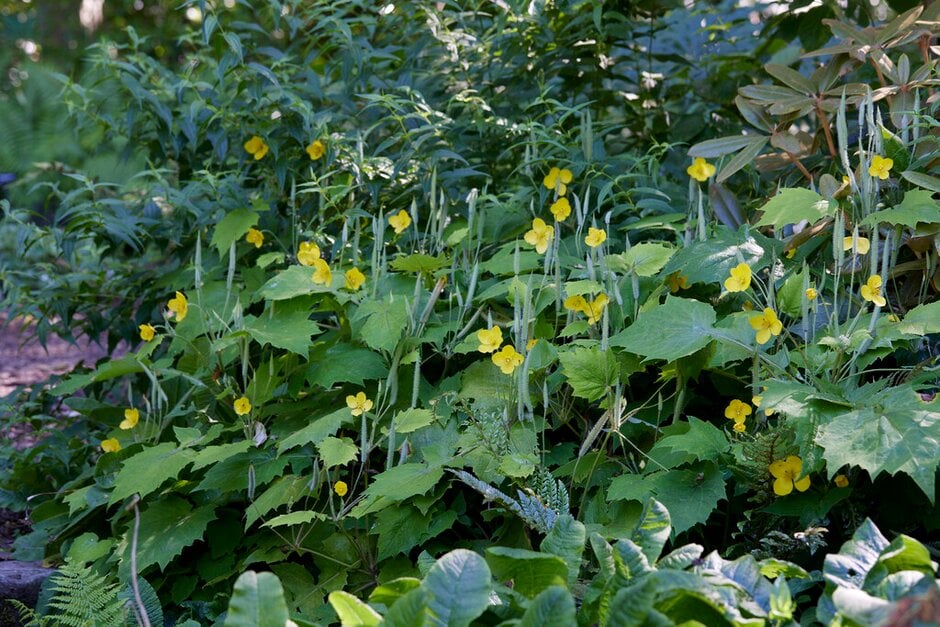Stylophorum lasiocarpum
A biennial or short-lived perennial, to around 50cm high in flower, forming a low mound of lobed and toothed green leaves. Leafy, branching, upright stems bear clusters of bright yellow, poppy-like flowers that open in succession from late spring to late summer, followed by long, silver haired seed capsules that explode when ripe to scatter seed
Size
Ultimate height
0.1–0.5 metresTime to ultimate height
1–2 yearsUltimate spread
0.1–0.5 metresGrowing conditions
Moisture
Moist but well–drained, Well–drainedpH
Acid, Alkaline, NeutralColour & scent
| Stem | Flower | Foliage | Fruit | |
| Spring | Green | |||
|---|---|---|---|---|
| Summer | Yellow | Green | ||
| Autumn | ||||
| Winter |
Position
- Full shade
- Partial shade
Aspect
East–facing or North–facing or West–facing
Exposure
Sheltered Hardiness
H6Botanical details
- Family
- Papaveraceae
- Native to GB / Ireland
- No
- Foliage
- Deciduous
- Habit
- Bushy
- Genus
A small genus of just three species of herbaceous perennials, native to woodland areas of North America and China. The foliage is green and lobed with wavy edges, and yellow, poppy-like flowers appear on long, bristly stems in spring and summer
- Name status
Unresolved
How to grow
Cultivation
Thrives in moist but well-drained, humus rich soil in partial or deep shade; will tolerate dry and heavy soils. Foliage may scorch in sun. Ideal for a shady border or woodland garden
Propagation
Propagate by seed, sown in containers in autumn, or by division in spring, though plants may be slow to re-establish. May self-seed in place in good conditions
Suggested planting locations and garden types
- Cottage and informal garden
- Wildflower meadow
- Flower borders and beds
Pruning
Deadhead to prolong flowering if seed is not required
Pests
Diseases
Generally disease-free
Get involved
The Royal Horticultural Society is the UK’s leading gardening charity. We aim to enrich everyone’s life through plants, and make the UK a greener and more beautiful place.

